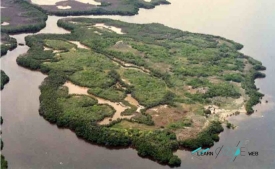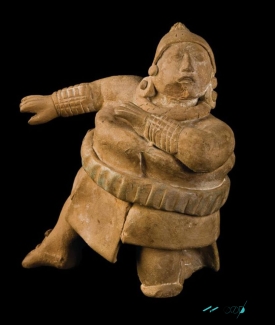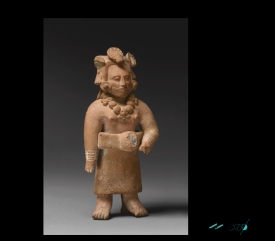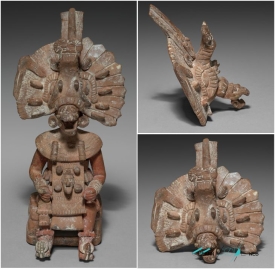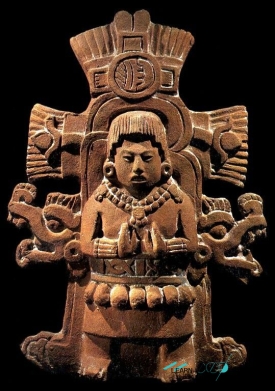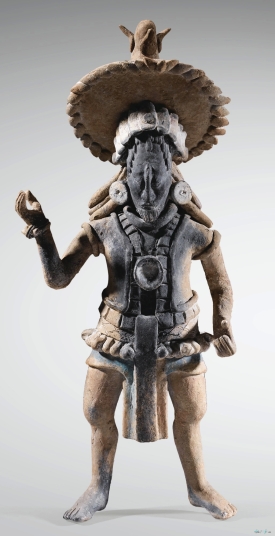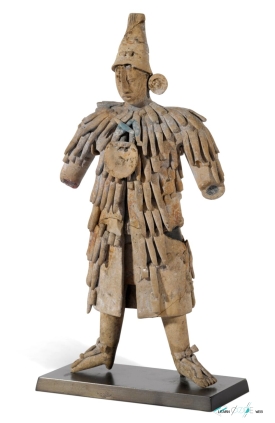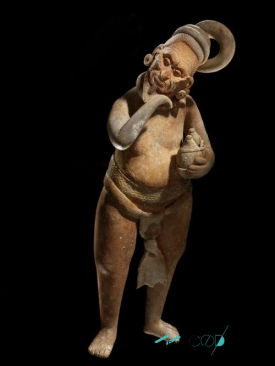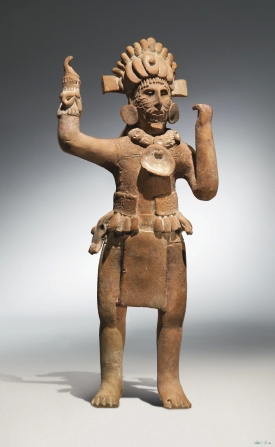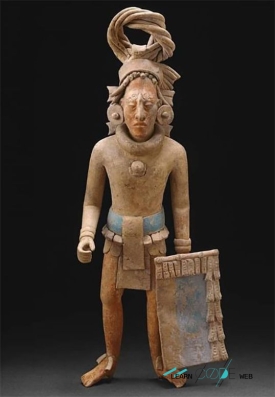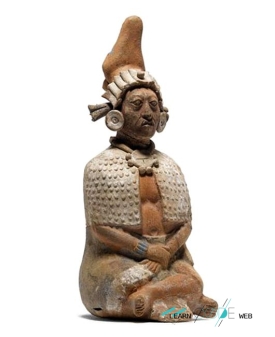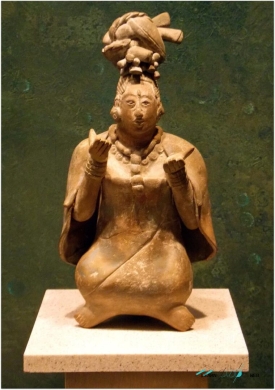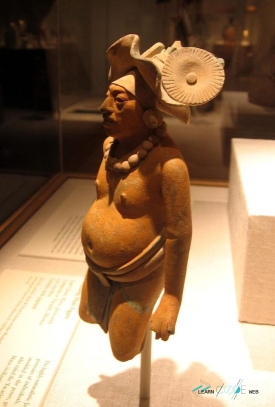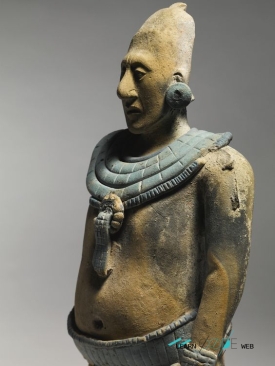Jaina Island is a small island of calcareous nature and artificially constructed, located on the coast of the Yucatán Peninsula, in the Mexican state of Campeche. It is located about forty kilometers north of San Francisco de Campeche and around fifteen kilometers south of the island of Piedras.
The island was inhabited by the Mayans since the 3rd century AD. until the 12th century AD, and was an important ceremonial and funerary center. Thousands of ceramic figurines have been found on the island, representing people from all social classes, from rulers and priests to peasants and children. The figurines are an invaluable source of information about Mayan culture and society.
The discovery of the artificial Mayan island is an important find that provides new information about Mayan architecture and culture.
In addition to the ceramic figurines, other archaeological objects, such as vessels, plates, masks and tools, have been found on Jaina Island. The island is also an important site for migratory birds, and is home to a wide variety of flora and fauna.
In 2023, Jaina Island was included in the Mayan Train project, and restoration and conservation work on the archaeological site is underway. In March, the INAH announced that new finds had been found on the island of Jaina. Among the finds are a tomb of a Mayan ruler, which contained rich grave goods, and a pyramid structure that has not yet been excavated.
These new findings confirm the importance of Jaina Island as a Mayan ceremonial and funerary center.
Jaina figurines are made of ceramic and were typically painted in bright colors, although much of the paint has faded over time. The figurines are generally 10-25 inches (25-65 cm) tall, but some can be larger. They were made using a variety of techniques, including mold-making and hand-modeling.
Jaina figurines were buried with the dead as grave goods. It is believed that they served a variety of purposes, including protecting the deceased in the afterlife and providing them with companionship. The figurines may also have been used to represent the deceased's social status and occupation.
Thousands of Jaina figurines have been discovered on the island of Jaina, which is located off the coast of the Mexican state of Campeche. The island was a major Mayan necropolis from the 6th to 9th centuries AD. Many of the figurines are now on display in museums around the world.
Here are some examples of human figurines from the island of Jaina:
Seated Lord with Removable Headdress (600-800 AD): This figurine depicts a seated male figure wearing a elaborate headdress and jewelry. He is likely a ruler or other high-ranking individual.
Female Ballplayer (600-800 AD): This figurine is extremely unusual, as it depicts a female ballplayer. Although figurines of female ballplayers are common in Postclassic Huastec art, this may be one of the only known figurines of a female ballplayer from the ancient Maya world.
Rattle in the Form of a Mythological Figure (650-800 AD): This rattle depicts a mythological creature with a human head and the body of a jaguar. It may have been used in religious ceremonies or to frighten children.
Human figurines from the island of Jaina are a valuable source of information about Mayan culture and society. They provide insights into Mayan dress, jewelry, customs, and religious beliefs. The figurines are also works of art that can be admired for their beauty and craftsmanship.
The island was inhabited by the Mayans since the 3rd century AD. until the 12th century AD, and was an important ceremonial and funerary center. Thousands of ceramic figurines have been found on the island, representing people from all social classes, from rulers and priests to peasants and children. The figurines are an invaluable source of information about Mayan culture and society.
Mayan artificial island
In 2023, Mexico's National Institute of Anthropology and History (INAH) announced the discovery of an artificial Mayan island at the Jaina archaeological site. The artificial island, which has an area of approximately 2 hectares, was built with sascab, a calcareous rock. The artificial island is believed to have been built in the 7th century AD. as a ceremonial and funerary center.The discovery of the artificial Mayan island is an important find that provides new information about Mayan architecture and culture.
In addition to the ceramic figurines, other archaeological objects, such as vessels, plates, masks and tools, have been found on Jaina Island. The island is also an important site for migratory birds, and is home to a wide variety of flora and fauna.
In 2023, Jaina Island was included in the Mayan Train project, and restoration and conservation work on the archaeological site is underway. In March, the INAH announced that new finds had been found on the island of Jaina. Among the finds are a tomb of a Mayan ruler, which contained rich grave goods, and a pyramid structure that has not yet been excavated.
These new findings confirm the importance of Jaina Island as a Mayan ceremonial and funerary center.
Maya figurines
Human figurines from the island of Jaina are among the most iconic and prized objects from ancient Mesoamerica. They are known for their realism, detail, and variety, depicting people from all walks of life, including rulers, priests, warriors, merchants, farmers, and children. The figurines are also notable for their elaborate costumes and jewelry, which provide valuable insights into Mayan culture and society.Jaina figurines are made of ceramic and were typically painted in bright colors, although much of the paint has faded over time. The figurines are generally 10-25 inches (25-65 cm) tall, but some can be larger. They were made using a variety of techniques, including mold-making and hand-modeling.
Jaina figurines were buried with the dead as grave goods. It is believed that they served a variety of purposes, including protecting the deceased in the afterlife and providing them with companionship. The figurines may also have been used to represent the deceased's social status and occupation.
Thousands of Jaina figurines have been discovered on the island of Jaina, which is located off the coast of the Mexican state of Campeche. The island was a major Mayan necropolis from the 6th to 9th centuries AD. Many of the figurines are now on display in museums around the world.
Here are some examples of human figurines from the island of Jaina:
Seated Lord with Removable Headdress (600-800 AD): This figurine depicts a seated male figure wearing a elaborate headdress and jewelry. He is likely a ruler or other high-ranking individual.
Female Ballplayer (600-800 AD): This figurine is extremely unusual, as it depicts a female ballplayer. Although figurines of female ballplayers are common in Postclassic Huastec art, this may be one of the only known figurines of a female ballplayer from the ancient Maya world.
Rattle in the Form of a Mythological Figure (650-800 AD): This rattle depicts a mythological creature with a human head and the body of a jaguar. It may have been used in religious ceremonies or to frighten children.
Human figurines from the island of Jaina are a valuable source of information about Mayan culture and society. They provide insights into Mayan dress, jewelry, customs, and religious beliefs. The figurines are also works of art that can be admired for their beauty and craftsmanship.



